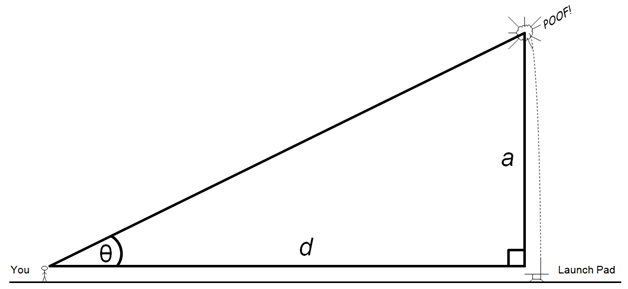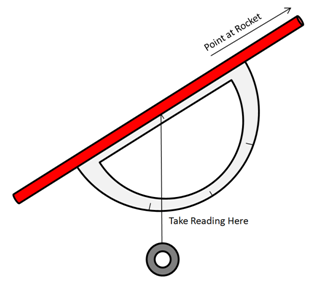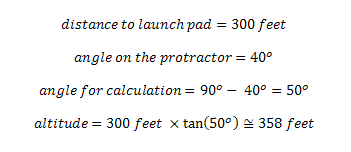http://www.estesrockets.com/media/c...3525d08d6e5fb8d27136e95/0/0/002246_main_2.png . OR
3) Optical Tracking
So far, small rockets have proven troublesome in our desire to measure altitude. They’re too small for an electronic system and they’re too small to carry a streamer payload. To track something like the Quark, we'll need to use optical tracking. There are several methods of optical tracking and I'll discuss the simplest one here. Be forewarned, however. There's going to be some math up ahead. Remember when you were a kid and you wanted to know when you were ever going to use trigonometry? Well buddy, here it is.
The quickest and easiest way to determine your rocket's altitude with optical tracking is to use elevation-angle-only tracking. This is a very simple method and the amount of trigonometry isn't nearly as bad as I made it out to be. Let's begin with a diagram of the launch site. If we assume that the rocket travels reasonably straight up from the launchpad, then we can draw ourselves a nice right triangle.
If we know the distance from our observation point to the launch pad (d) and the angle at which we can see the top of the rocket's trajectory (θ), we can calculate the altitude with the following equation:
If you’re using a calculator, make sure you’re in degree mode and not radian mode. Of course, this is assuming you measured the angle in degrees, although I don’t think I’ve ever met anyone who measured rocketry angles in radians. Measuring the angle can be done with an inclinometer. The Quest Skyscope and the Estes Altitrak are two types of inclinometers specifically designed for model rocketry. If you're in a pinch, you can make your own inclinometer with a protractor, a piece of string, a washer, and a straw.
Simply track the rocket to its highest point, tilt the homemade inclinometer so that you're looking at the apogee point through the straw, and pinch the string to the protractor once the string stops moving. Subtract the number on the protractor from 90 and you have the angle you need for your calculation! Here's an example of this type of calculation in action:







